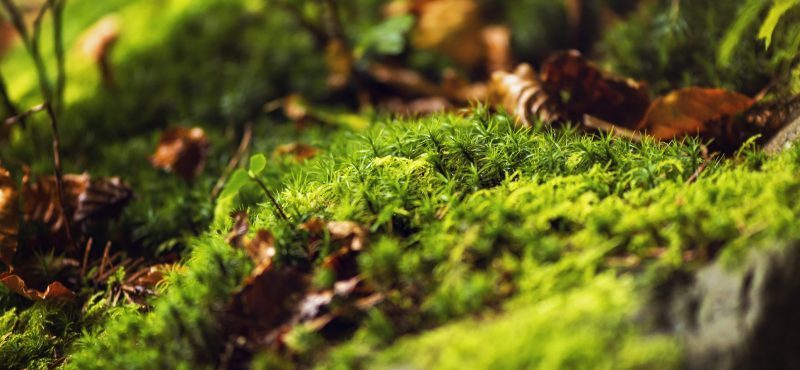In Portland, Oregon, the U.S. Forest Service has started using a pollutant detector that’s been right in front of humans for as long as we’ve existed. If the agency’s experiment continues to prove successful, it could be a game-changer for urban landscapes the world over.
This innovative instrument of detection? Tree moss.
Sarah Jovan, an ecologist with the U.S. Forest Service who’s spearheaded this research, recently spoke with Christopher Dorobek about its implications on the DorobekINSIDER. For this work, Jovan was a finalist in the 2017 Service to America Medals, or SAMMIES — an award that recognizes and celebrates remarkable work in the federal government — in the Promising Innovations category.
In 2013, she teamed up with a research forester named Geoffrey Donovan, and the two began testing levels of dangerous metals in moss collected from trunks and branches throughout Portland. They logged 346 sites in all.
“No one’s ever looked at urban air at that level of detail before,” Jovan said. “And it’s been very revealing.”
Suffice to say, the results surprised them: Neighborhoods near two stained-glass manufacturers showed dangerous levels of cadmium and arsenic, both of which can cause cancer.
“If we take a little moss off the tree and we grind it up and we extract heavy metals or other air toxins from it, it will correlate, to some degree, with what’s actually in the air,” Jovan said.
That, she explained, is because moss and lichens don’t have roots; instead they absorb nutrients through moisture in the atmosphere. Due to this, researchers can observe ties between pollutants in the organism and pollutants in the air.
In 2016, when Oregon’s environmental department used conventional pollutant monitors to check on the Forest Service’s findings, they found cadmium levels nearly 50 times higher than the acceptable health benchmark and arsenic more than 150 times higher.
“[These stained-glass manufacturers] weren’t being regulated for cadmium emissions or required to filter their emissions from their glass furnaces,” Jovan said. “Essentially, we used the moss as a screening tool and we kind of zeroed in on these hot spots of cadmium in Portland, and then we teamed up with local regulators and said, ‘Hey, you know, the moss is suggesting there’s some pretty high cadmium in these neighborhoods. What do you want to do about it?’”
Jovan has no illusion that moss offers the same precision as standard air monitors. But if the Forest Service were to install the more sophisticated instruments in those roughly 350 locations through Portland, the expense would total near $17 million, she said. For Jovan and her team, the entire study cost less than $100,000.
The Forest Service has considered this frugality worthwhile enough to conduct research for many years now. Even before applying the study to an urban landscape, the agency had been studying moss as a pollutant monitor in less-developed, forested areas.
There are, however, limitations. The moss and lichen test could run into some problems depending on the location of future studies. A desert climate city like Los Angeles probably wouldn’t be an option, Jovan said.
“[Portland and the surrounding areas are] the ideal case because this particular moss just grows hugely and abundantly on most street trees across the city,” she said. “But there are a lot of other places where we could do it. For instance, we’ve scouted Cincinnati, and we thought about doing some work in Philadelphia. Granted, there’s a lot less material to work with, but we don’t actually need that much to get the data.”
Dorobek went on to ask Jovan how she wound up in this role, discovering novel functions for tree moss.
“I was always kind of a nature nut and spent all my time outside,” she said. “I guess I started out really liking the weirdest stuff I could get my hands on, like bugs and frogs, then I kind of moved on to mushrooms — I’m actually technically a lichenologist. But then, moss was just so abundant in Portland, and there’s lots of jobs you can do if you’re into moss and lichens. Part of it for me was, how do I combine this fascination of mine with some sort of valuable service?”
Eventually, the Forest Service hired Jovan to venture into forests and collect lichen. The urban experiments were an offshoot.
Their initial thought in sampling moss in the city was to see if denser vegetation cover somehow correlated with lower pollution, she explained. But producing the high-resolution maps of pollutants came to dominate the research.
They haven’t quite answered how much and which pollutants can be scavenged by plant life, but their discoveries of hot spots have had a more profound impact on immediate action.
Enjoying these stories of the federal government’s undercover heroes? Check out the other SAMMIE finalists and follow their successes here.





This is an exciting discovery!